 |
|
HOME
|
US Navy -
ships
|
US Navy - air
units
|
USMC - air
units
|
International
Navies
|
Weapon Systems
|
Special Reports |
|
Surface Vessel Weapon System MBDA Sea Wolf SAM for GWS-26 and GWS-25 Guided Weapon System |
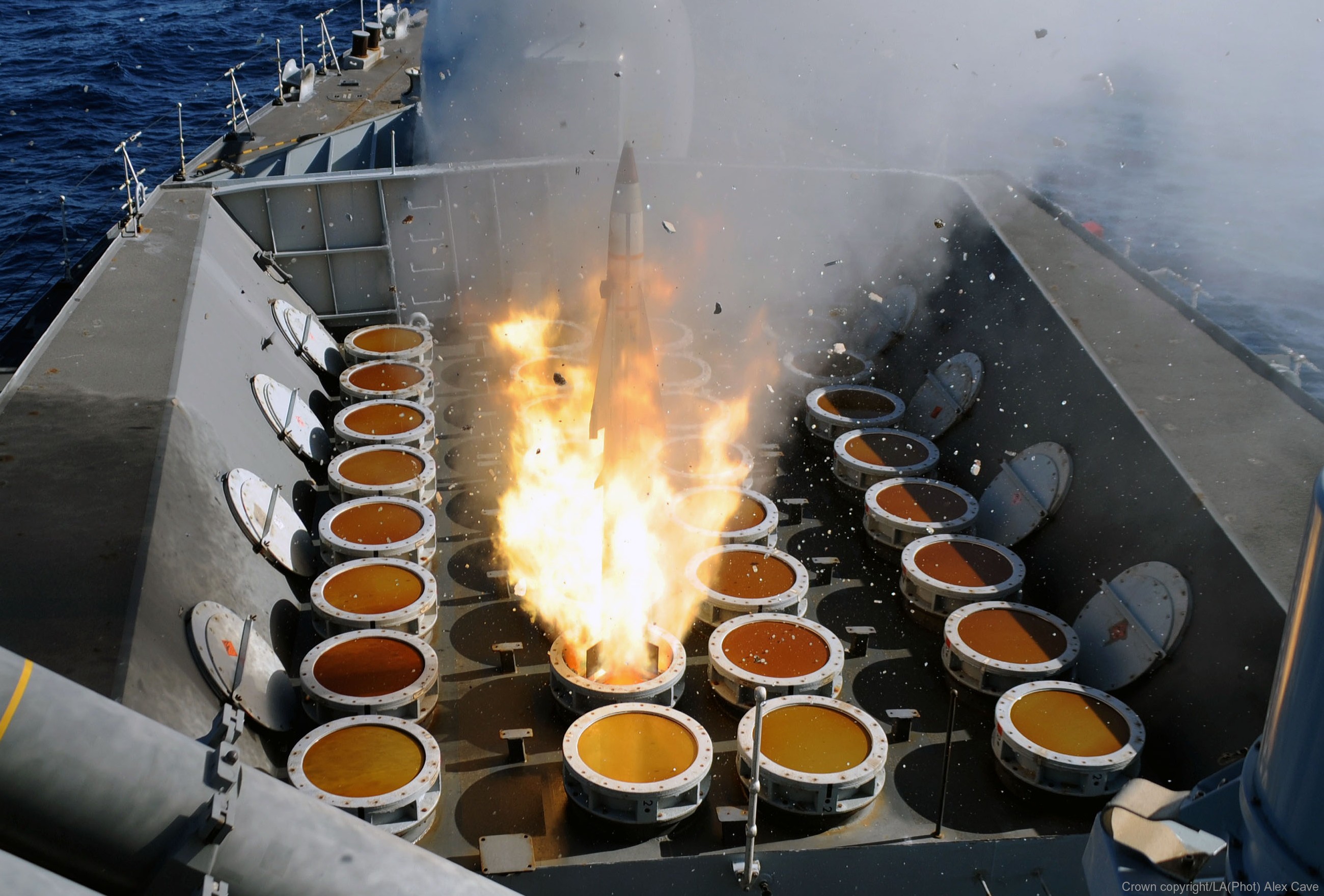 |
| 10/20 |
|
Sea Wolf is a naval surface-to-air missile system designed and built
by BAC, later to become British Aerospace (BAe) Dynamics (now MBDA).
It is an automated point-defence weapon system designed as a
short-range defence against both sea-skimming and high angle
anti-ship missiles and aircraft. The Royal Navy has fielded two
versions, the GWS-25 Conventionally Launched Sea Wolf (CLSW) and the
GWS-26 Vertically Launched Sea Wolf (VLSW) forms. In Royal Navy
service Sea Wolf is being replaced by Sea Ceptor. History: The earliest point-defence missile used by the Royal Navy was the Seacat, which had been rapidly developed from an earlier anti-tank missile design, the Malkara. As a weapon originally designed to operate against slow-moving ground vehicles, the missile had subsonic performance and was of limited capability against even early jet aircraft. It was used largely due to the ease which it could be adapted to the role simply by replacing the original wire guidance system with a radio command link, and that its small size allowed multi-round launchers to be fitted to ships in place of their Bofors 40 mm guns. It entered service in 1961, the first point-defence missile to do so. The limited performance was understood to be a problem from the start and a requirement for a higher performance replacement was published in 1964. British Aircraft Corporation (BAC) won a 1967 development contract along with Vickers and Bristol Aerojet. Although only slightly longer and heavier than Seacat, Sea Wolf offered dramatically higher performance, with a top speed on the order of Mach 3, an effective range roughly double that of Seacat, and a fully automated guidance system that made engagements much simpler. Testing lasted from 1970 until 1977, with shipborne trials on a modified Leander class frigate, HMS Penelope, from 1976. Sea Wolf was tested with a vertical launch system early in the development period on a modified Loch class frigate, HMS Loch Fada but for obscure reasons work did not continue in this direction: the GWS-26 "VL Seawolf (VLS)" being a much later (1980s) development. During trials, the missile performed impressively, once intercepting a 114 mm (4.5 in) shell. The first deployment, in the GWS-25 form, was on the Type 22 frigate (2 systems) and later on modified Leander class frigates (1 system) in six-round, manually-loaded trainable launchers. It entered service with the Royal Navy in 1979 and was used during the Falklands War. The current version is the GWS-26 Mod 1 system on Type 23 frigates, fielding 32 vertical launch missiles (VL Sea Wolf) in its missile silo. It is expected to remain in service until 2020. Description: Sea Wolf is powered by the Blackcap solid-fuel rocket to a maximum velocity of Mach 2, and can intercept targets at ranges between 1,000 and 6,000 m (1,100 and 6,600 yd) and altitudes from 10 m (33 ft) to 3,000 m (9,800 ft). The warhead weighs 14 kg (30.9 lb) and is a proximity fuzed HE-fragmenting type. In the manually loaded form, the missiles are stored on board in maintenance-free canisters, sealed until use and handled like a round of ammunition. Fire control: The standard mode is fully automated and uses radar tracking. Target detection is carried out using the ship's surveillance radars. In the Type 22- and Sea Wolf-equipped Leander class, this was the radar Type 967-968 combination; the D-band Type 967 providing long-range surveillance and the E-band Type 968 providing short-range target indication. On the Type 23 frigates, these functions have been taken over by the Type 996 3D surveillance radar. Target data is processed by the ship's computers and when the system is live, targets are automatically assigned and engaged automatically (although this can be over-ridden by the Missile Director (MD) in the Operations Room). When a target is to be engaged, the ship's computer slews one of the two Sea Wolf trackers onto the target (there was a single tracker on a Sea Wolf Leander). Originally the Type 910, with an I-band radar, was used but this suffered from poor performance locking onto low-altitude targets hidden in the background sea clutter in the Falklands War. Low-level targets had to be engaged using the 910's secondary TV mode to manually track the target. The lighter Type 911 supplanted the Type 910, adding a second radar (a K-band set based on the Blindfire tracker of the Rapier missile, to control engagements at low level) and was fitted in the 7th Type 22 Frigate onwards. Unlike Type 910, Type 911 does not have any TV function; the TV camera is retained only to allow the Missile Director to visually confirm targets and to provide a record of engagements. When lock has been achieved with the missile tracker a round is fired and tracked by a pair of radio beacons in the missile's tail. The ship-board system constantly measures the angle differences between the target and the missile and issues guidance commands to the missile through an Automatic Command to Line of Sight (ACLOS) device transmitting on a microwave link controlling the rear fins of the missile. It is possible for a tracker to control a salvo of two missiles. The radar and CCTV guidance system were developed by Marconi Radar at Great Baddow, Essex. Combat performance: During the Falklands War, Sea Wolf was the Royal Navy's only modern point-defence weapon. It equipped the Type 22 frigates HMS Brilliant, HMS Broadsword and the Batch 2 Leander class frigate HMS Andromeda. These ships were assigned "goalkeeper" duties, to provide close anti-aircraft defence of the carrier task force. In an attempt to overcome the fleet's overall air defence deficiency following the loss of HMS Sheffield, a new tactic was devised, which saw each of the two Type 22 frigates paired with each of the two remaining Type 42 (area air defence) destroyers. The pairing was unofficially termed "Type 64", the sum of both classes numbers. The two pairs were deployed some distance from the main fleet, covering likely attack routes, in an attempt to draw attacking aircraft into a "missile trap", the intention being that, if the Type 42 was unable to engage targets at longer ranges with its Sea Dart missiles, the Type 22 would use its short-range Sea Wolf missiles to defend both ships. On 12 May 1982, Brilliant and HMS Glasgow were operating in combination and were attacked by two flights of four Argentine Douglas A-4 Skyhawk aircraft. Brilliant shot down two of these and caused a third to crash trying to avoid the missile. The second wave of aircraft attacked during a failure of the missile system and the Type 42 Glasgow sustained damage. On 25 May 1982, HMS Coventry and Broadsword also operating in a 22/42 combination to the north-west of Falkland Sound came under attack by two waves of two A-4 Skyhawks. Broadsword attempted to target the first pair with Sea Wolf but the tracking system locked down and could not be reset before the aircraft released their bombs. Broadsword was hit by one bomb, which bounced up through the deck and destroyed her Westland Lynx helicopter. The second pair of Skyhawks headed for Coventry 90 seconds later at a 20-degree angle to her port bow. On Broadsword the Sea Wolf system had been reset and acquired the attacking aircraft but Coventry's evasive manoeuvring took her through the line of fire and the lock was lost. Coventry was struck by three bombs and sank shortly after. Sea Wolf suffered from problems with hardware failure causing launches to fail, broken locks from the extreme sea conditions and the Argentines' low-altitude hit-and-run tactics with multiple, crossing targets which it was designed to intercept. Sea Wolf accounted for three confirmed "kills" and two further possibles from eight launches. Variants: GWS-25 Box Launcher: GWS 25 Mod 0 Sea Wolf: Standard version introduced in 1979. With type 910 fire control radar. GWS 25 Mod 1 Sea Wolf: Version with Ferranti FM1600C fire control computer and Type 910 or Type 911 fire control radar. Improved performance when fighting low-flying targets. GWS 25 Mod 2 Sea Wolf: Version with Ferranti FM1600D fire control computer and type 911 fire control radar. GWS 25 Mod 3 Sea Wolf: Version with Ferranti FM1600E fire control computer and type 911 fire control radar. GWS-26 Vertical Launching System (VLS) - 32 cells: GWS 26 Mod 1 VL Sea Wolf: Standard version with vertically launched guided missile, introduced in 1989. With new F2420 fire control computer and type 911 fire control radar. Instead of a launcher that is aimed at the target by the fire-control system, VL Sea Wolf uses a vertical-launch system (VLS). Missiles are launched vertically by a Cadiz booster motor and turnover pack, to clear the ship's superstructure and rapidly flipped onto their flight path by thrust vectoring. The booster motor, which also increases the range of VL Sea Wolf from 6.5 km (4.0 mi) to 10 km (6.2 mi), then separates from the missile, which flies on to engage the target. Sea Wolf Block 2: Introduced in 2005. Guided missiles with new electronics (including the ASRAAM multichip module). Can be used with GWS 25 mod 3 and GWS 26 Mod 1. Sea Wolf SWMLU: Sea Wolf Mid-Life Upgrade, introduced in 2008. Retrofit program with modernized electronics and new software as well as Sea Wolf Block 2 guided missile. GWS 26 Mod 2 Lightweight Sea Wolf: Introduced in 1986. Retrofit program for the Sea Cat system. With compact ST1802SW fire control radar and quadruple guided missile launcher. Development stopped. GWS 27 Sea Wolf: Fire-and-Forget version with active radar seeker head and increased range. Development stopped in 1987. Landwolf: Prototype of a vehicle-bound version, presented in 1985. Development stopped. By the end of 2010, 2,543 Sea Wolf and 437 VL Sea Wolf guided missiles were produced. Sea Wolf is expected to remain in service until 2025. The successor system CAMM (Common Anti-Air Modular Missile) will be introduced in the Royal Navy from 2018 to 2020. Sea Wolf has been installed on the following classes of ships in the Royal Navy: Type 12I Leander class (batch 3A): With a Type 910 fire-control radar, a six-way box-launcher and a total of 24 guided missiles Type 22 Broadsword class (batch 1): With two Type 910 fire-control radars, two six-way box-launchers and a total of 48 guided missiles Type 22 Broadsword (Boxer) class (batch 2): With two Type 910 fire-control radars, two six-way box-launchers with a total of 60 guided missiles Type 22 Broadsword (Cornwall)class (batch 3): With two Type 911 fire-control radars, two six-way box-launchers with a total of 60 guided missiles Type 23 Duke class: With two Type fire-control 911 radars and a total of 32 VLS cells Replacement (CAMM - Sea Ceptor System): The system chosen is the Common Anti-Air Modular Missile (CAMM) which will be known in Royal Navy service as "Sea Ceptor". It will enter service on all of the Type 23 frigate from around 2016 onwards and will be migrated in time to the Type 26 global combat ships early in the next decade, providing a local air defence capability for the Royal Navy for the next 30 years or so. The CAMM will share components with the ASRAAM missile in service with the RAF. Specifications: Manufacturer: British Aircraft Corporation (1967-1977) BAe Dynamics (1977-1999) MBDA (UK) Ltd (1999-present) Type: Surface-to-air missile (SAM) Mass: 82 kg (180.8 lb) Length: 1.9 m (6 ft 2.8 in) Diameter: 180 mm (7.1 in) Wingspan: 450 mm (17.7 in) Warhead: 14 kg (30.9 lb) HE Blast-Fragmentation Detonation mechanism: Direct contact/Proximity fuse activated Engine: Blackcap solid fuel sustainer Operational range: (VLS) 1-10 km (0.5-5.4 nmi) Flight ceiling: 3,000 m (9,842.5 ft) Maximum speed: Mach 2+ Guidance: Automatic Command to Line-Of-Sight (ACLOS) In service: 1979- In use: Royal Navy, Brazilian Navy, Chilean Navy, Malaysian Navy source: wikipedia |
| images |
|
GWS-26 (Guided Weapon System) for Vertical-launched Sea Wolf (VL-Sea Wolf) on Type 23 Duke class Frigates 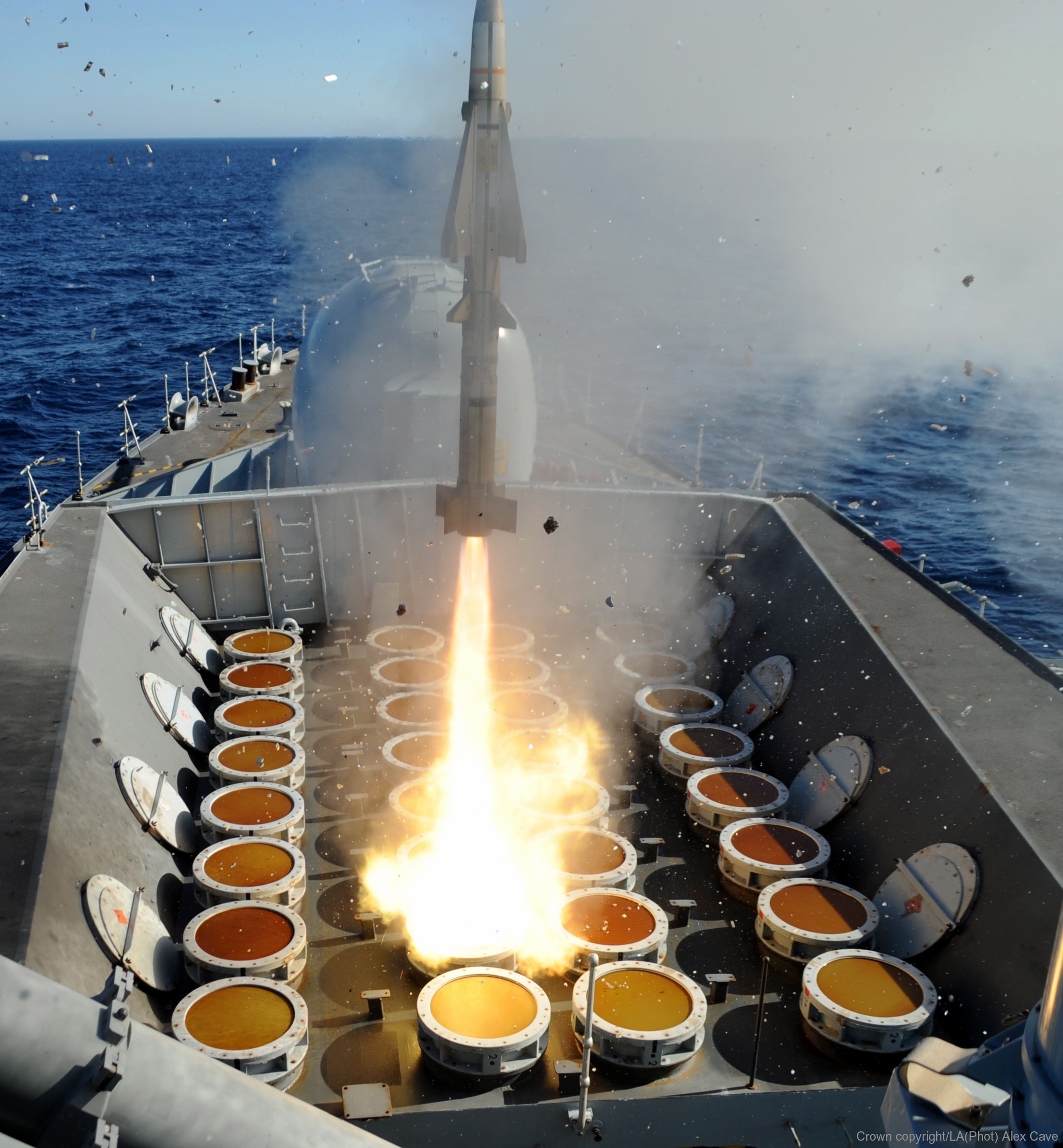 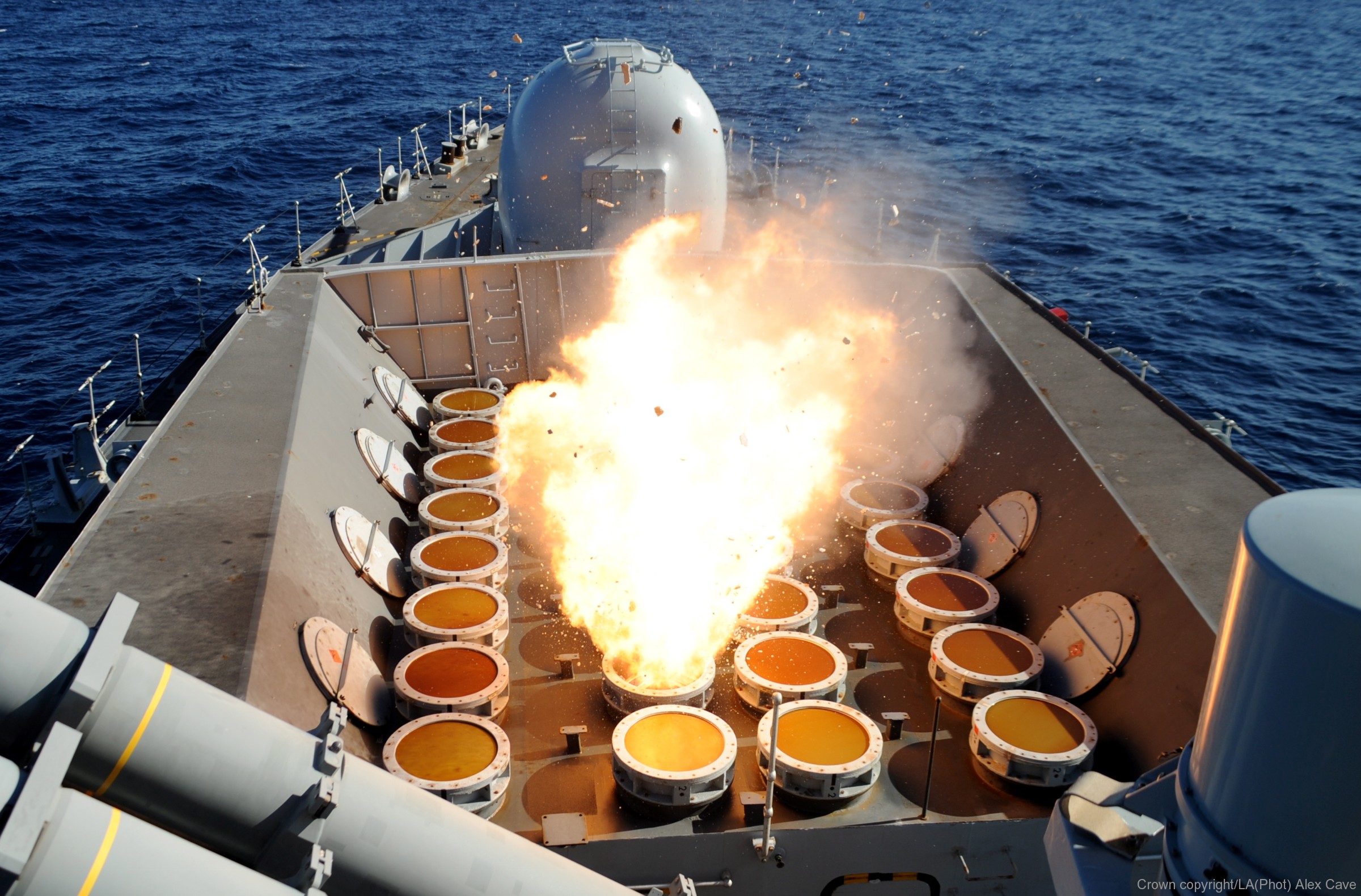 GWS-26 (Guided Weapon System) - 32-cell Vertical Launching System (VLS) aboard a Type 23 Duke class Frigate 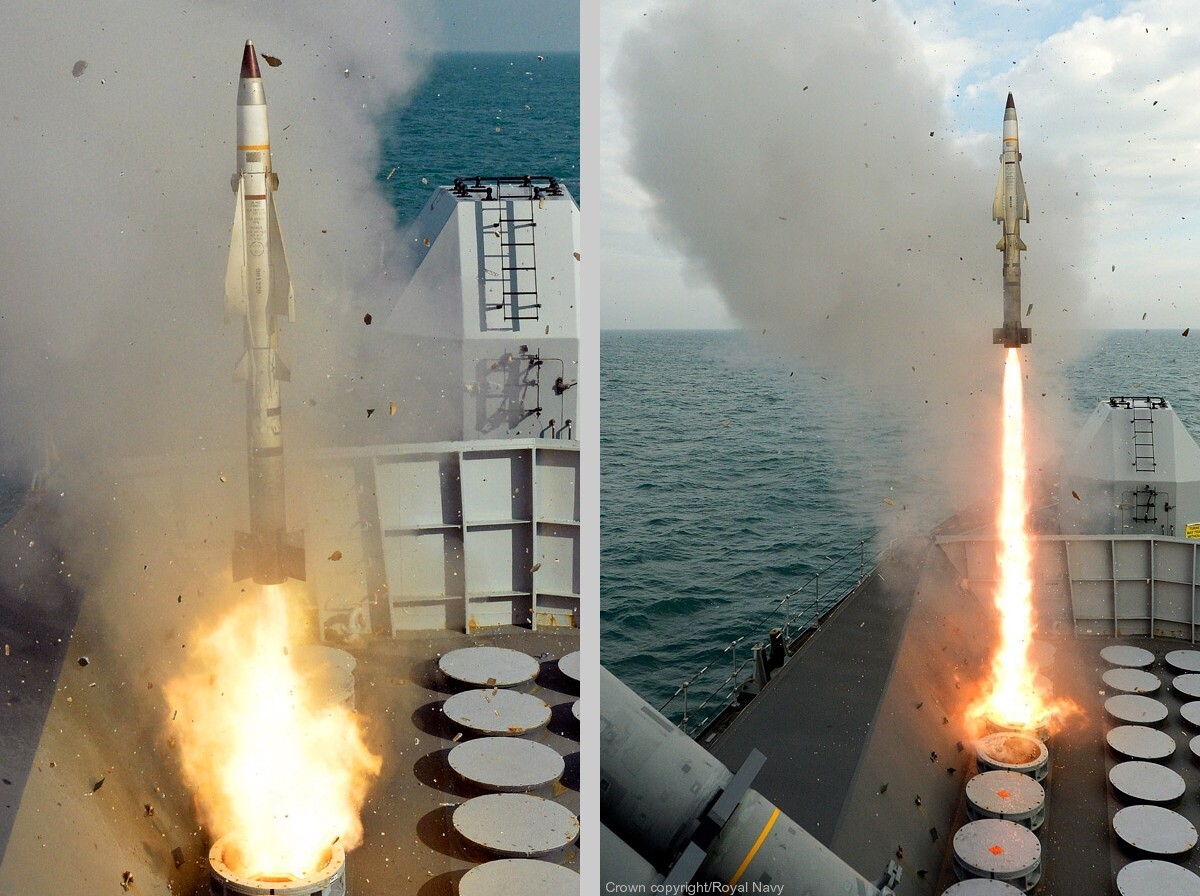 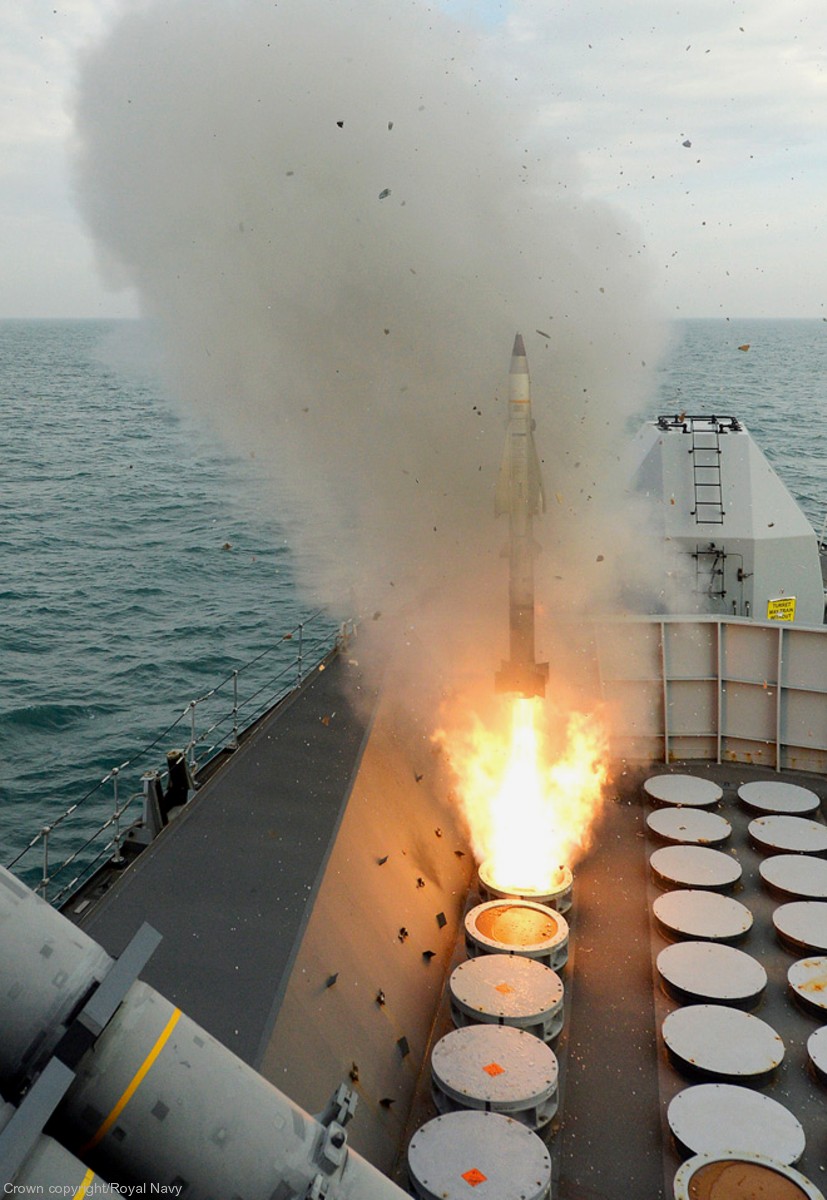 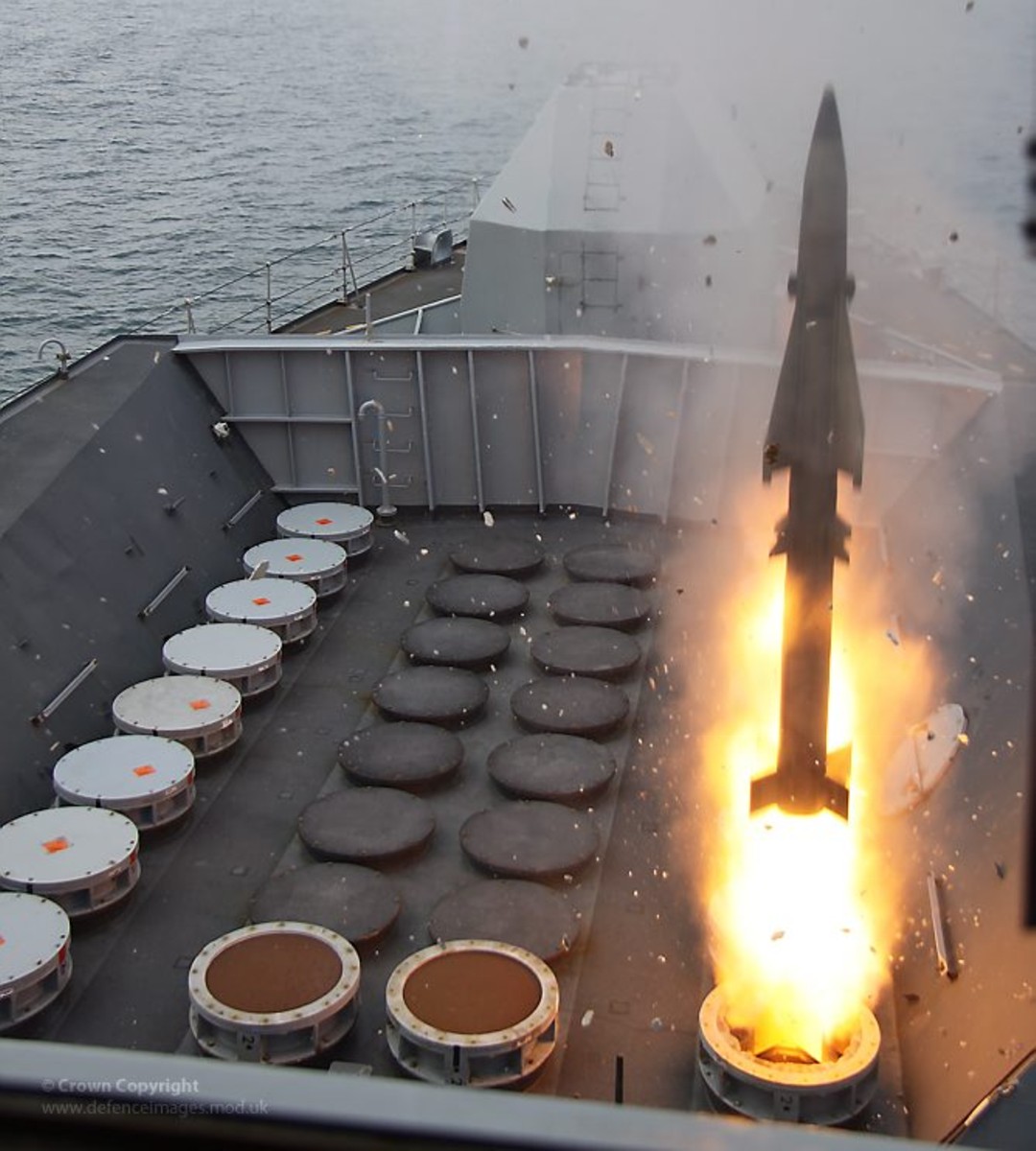 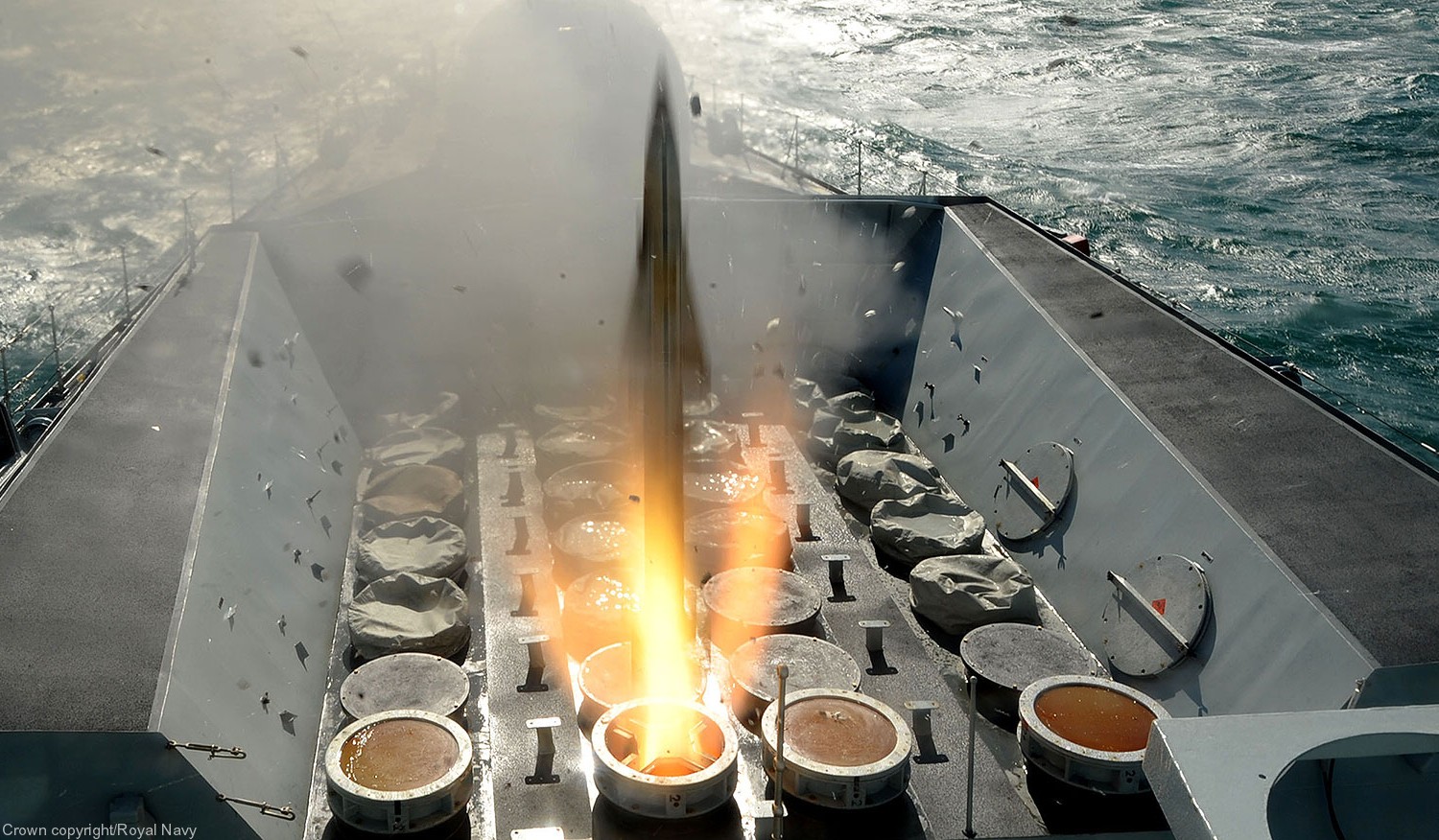 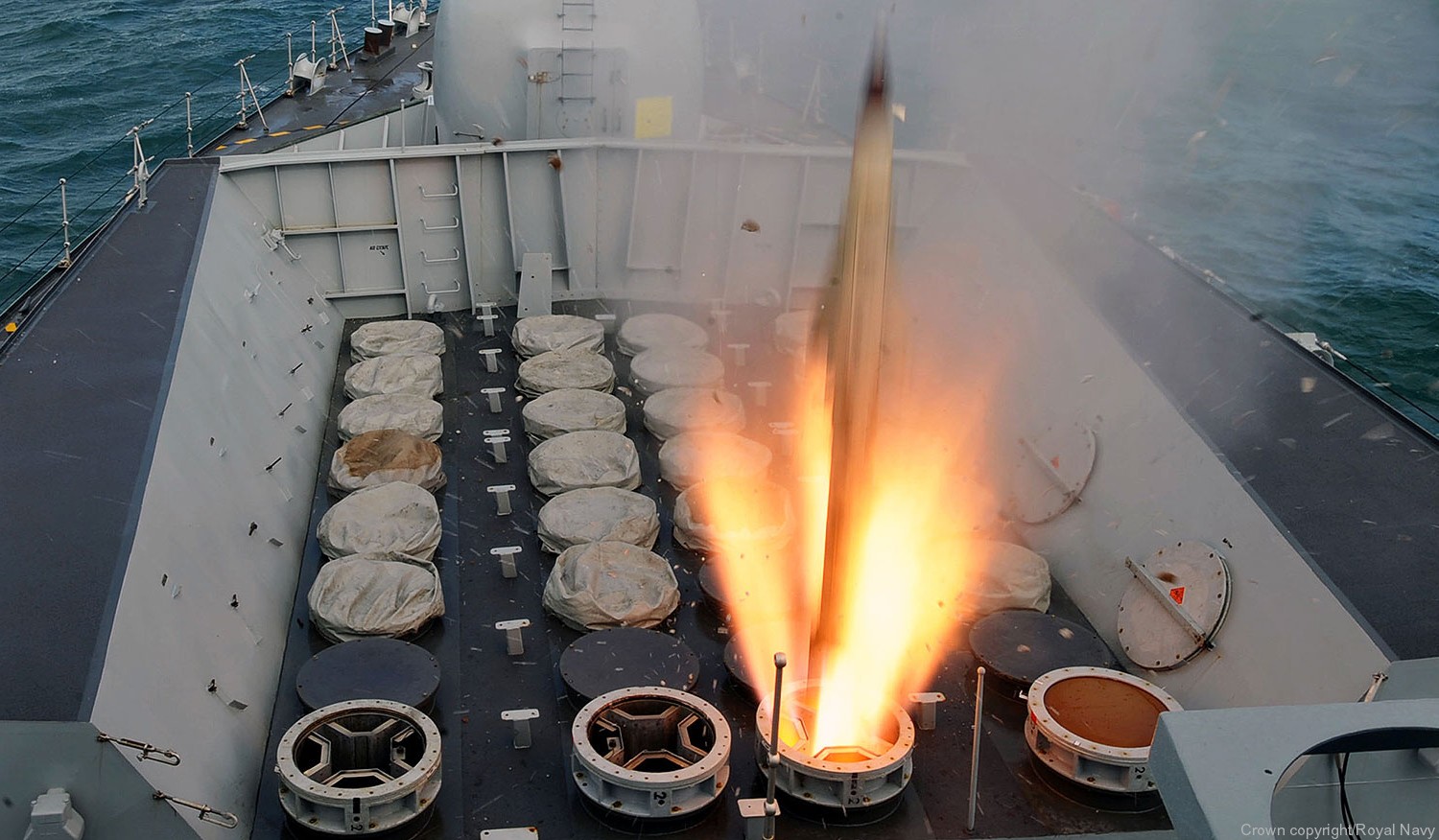 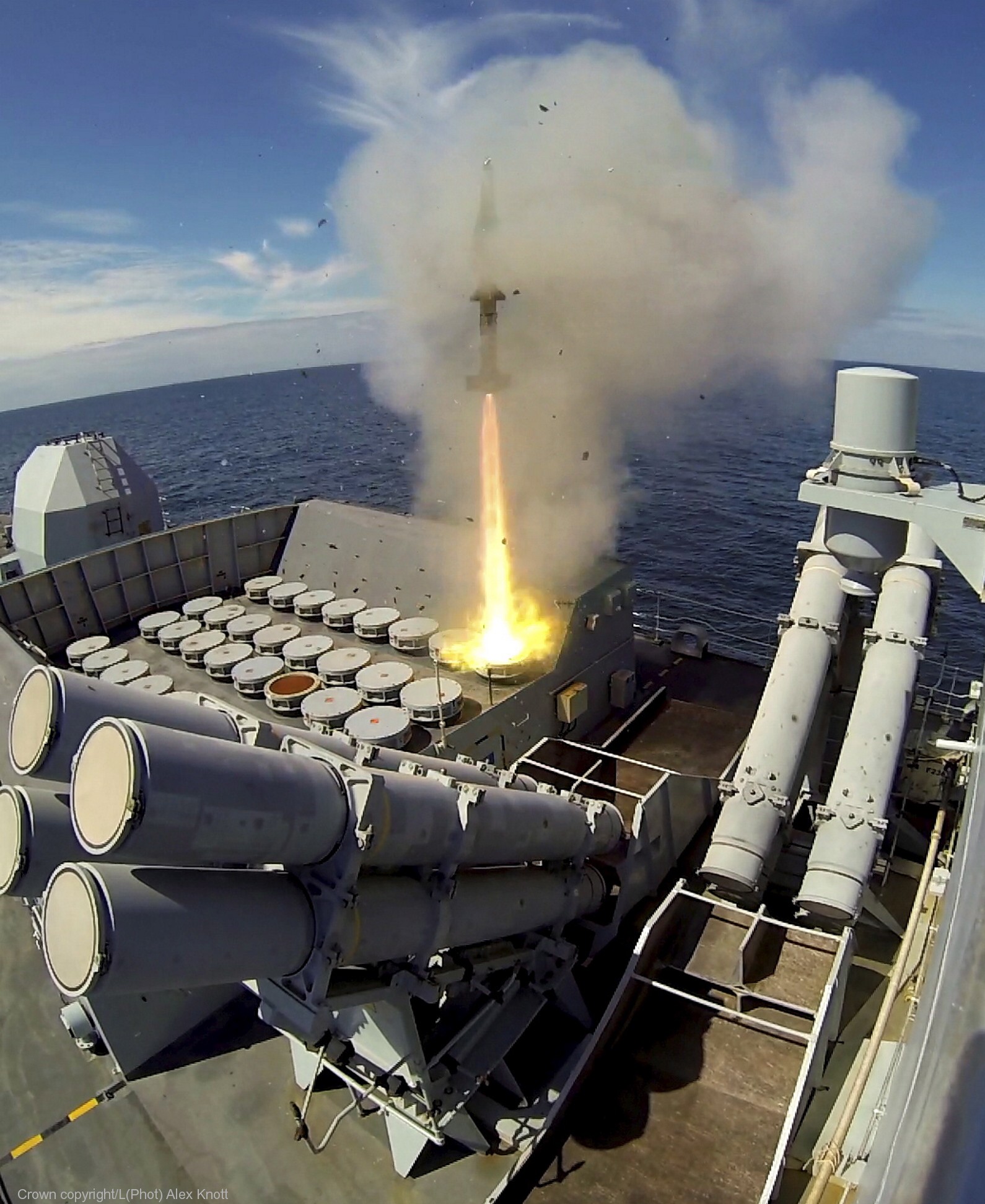 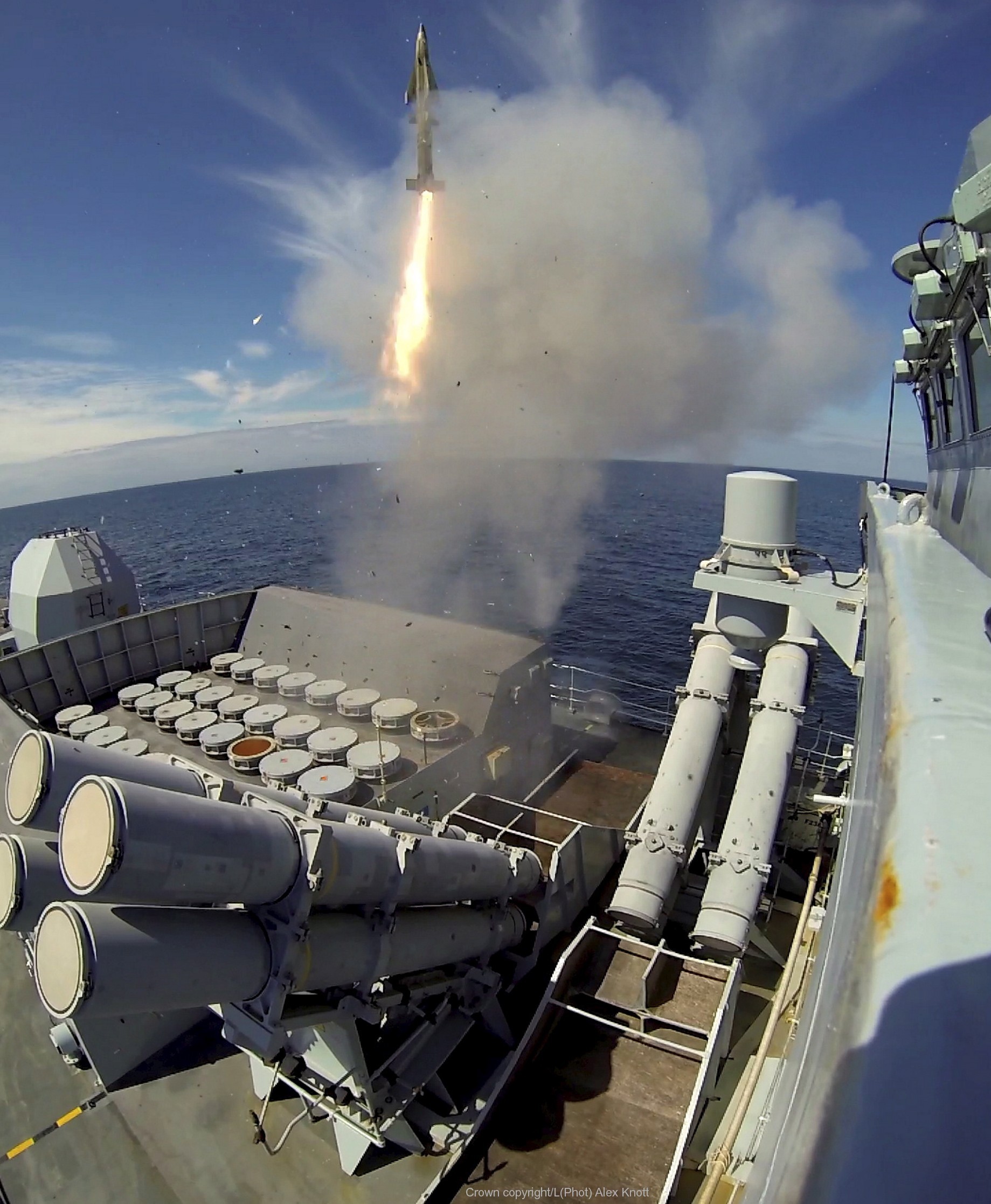 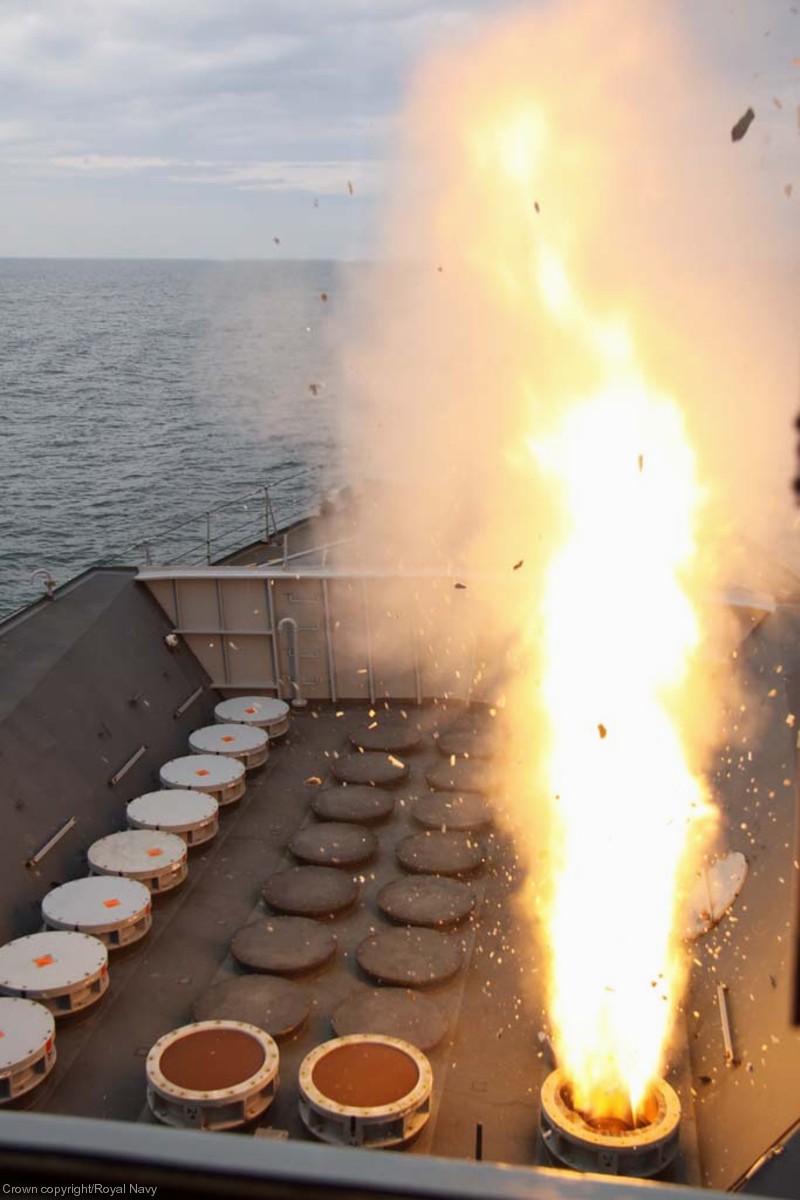 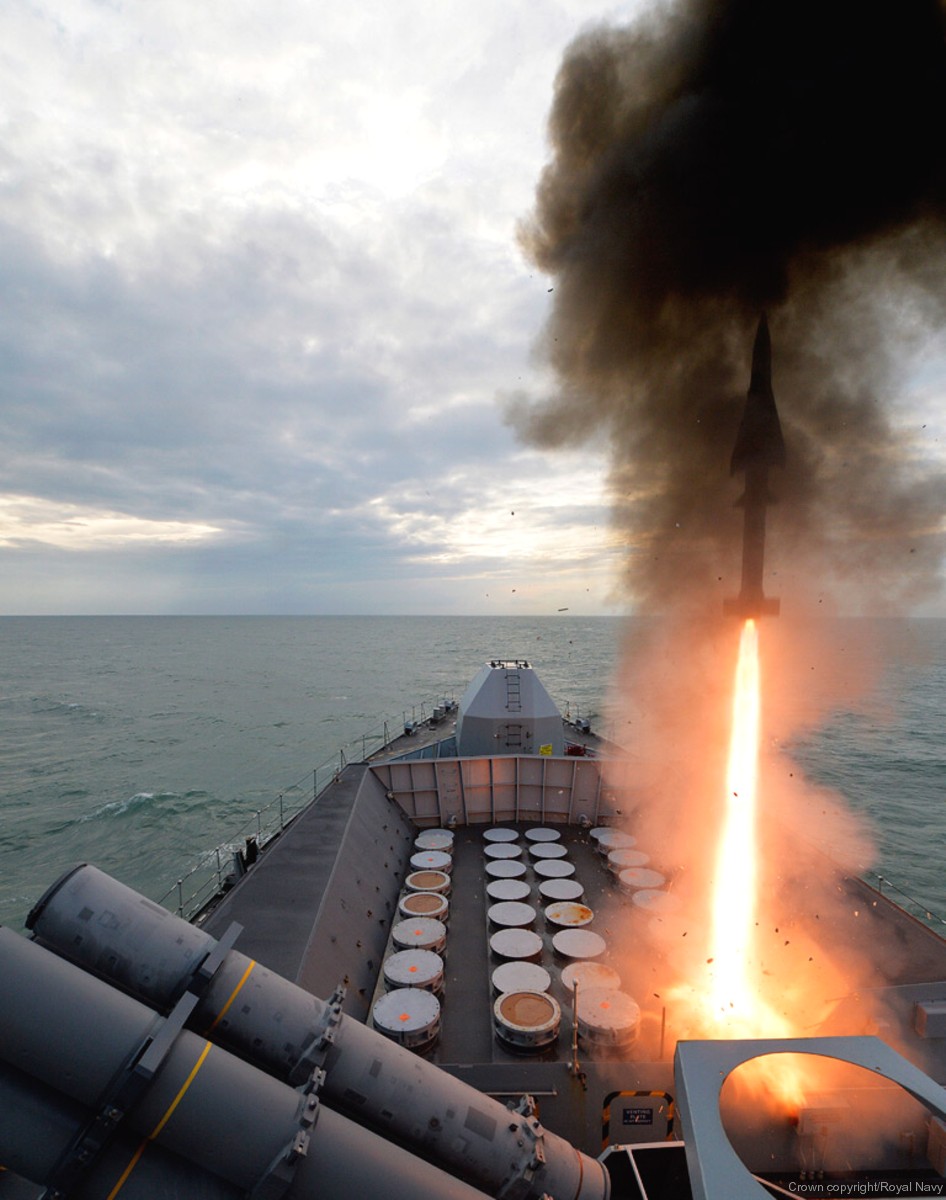 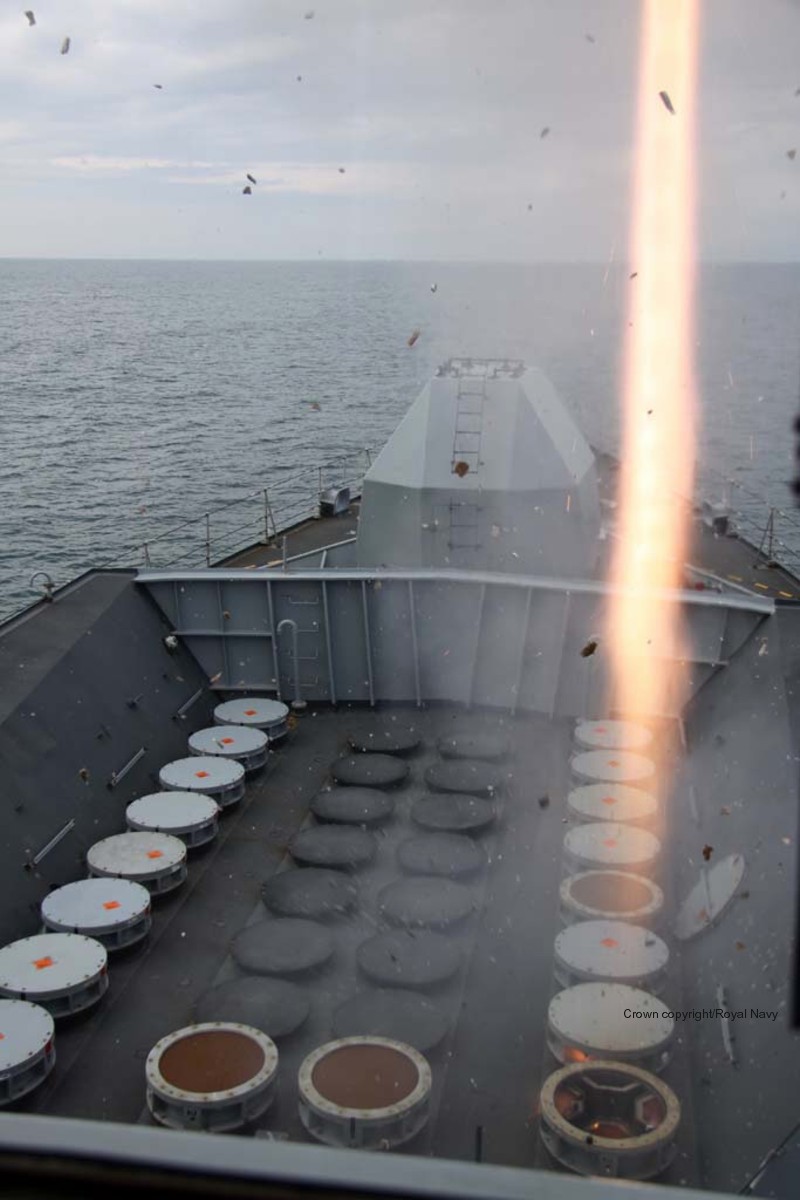 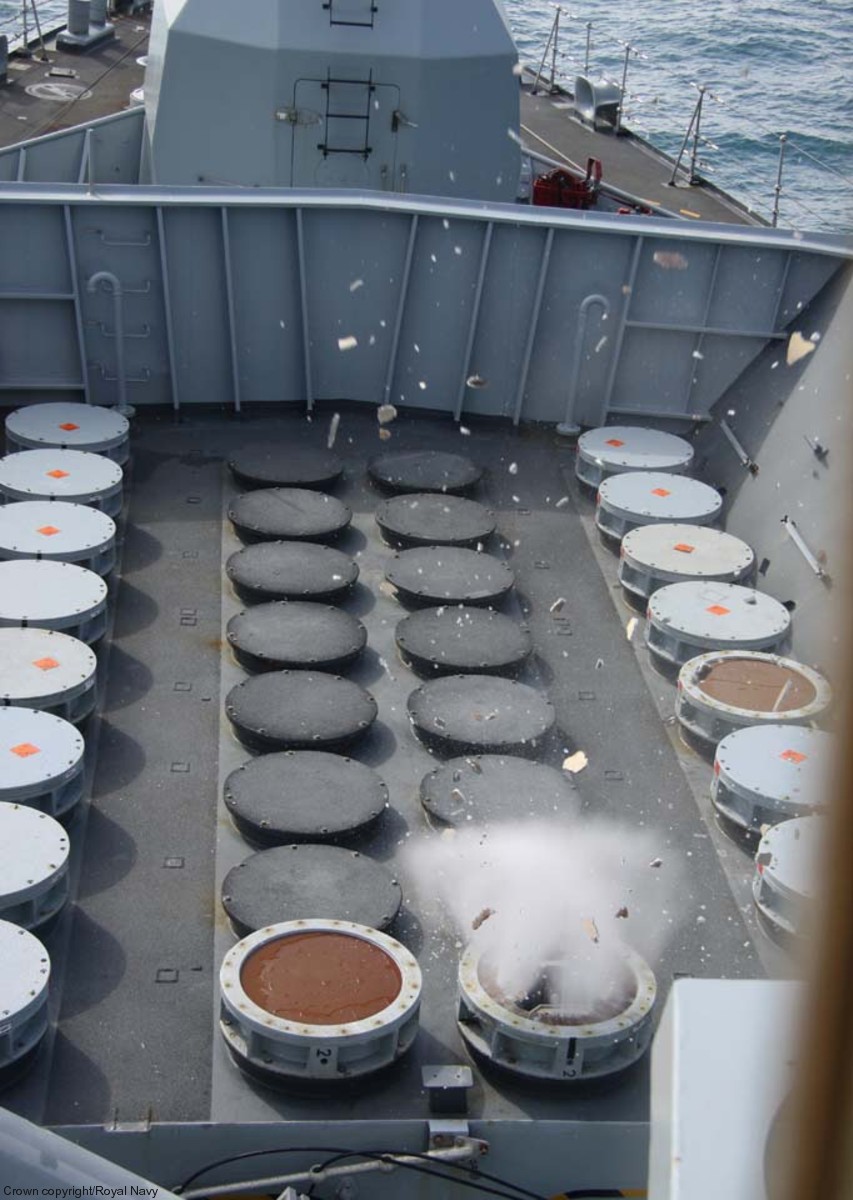 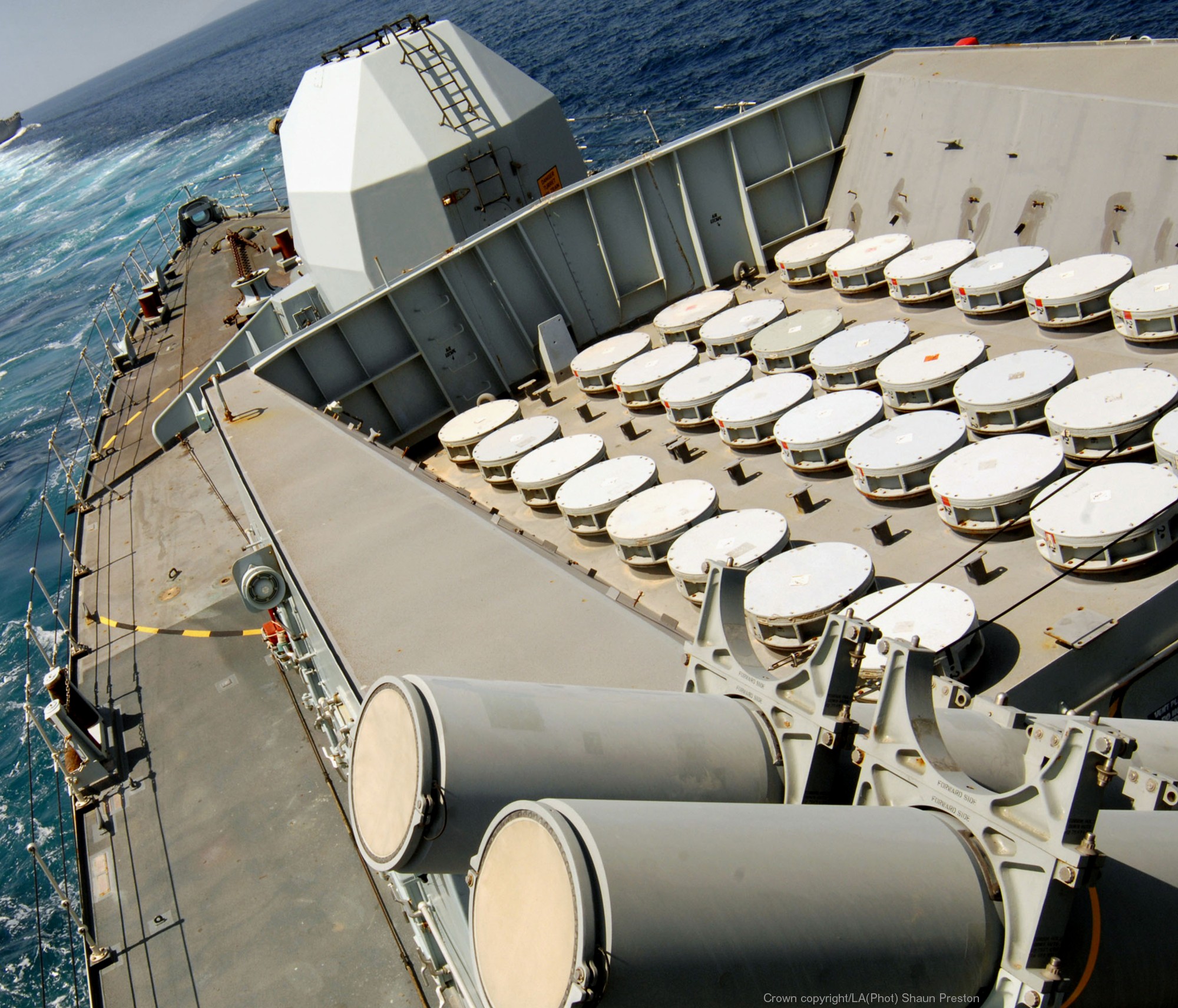 GWS-25 (Guided Weapon System) six-way box-launcher for Sea Wolf SAM on Type 12 Leander class and Type 22 Broadsword class Frigates 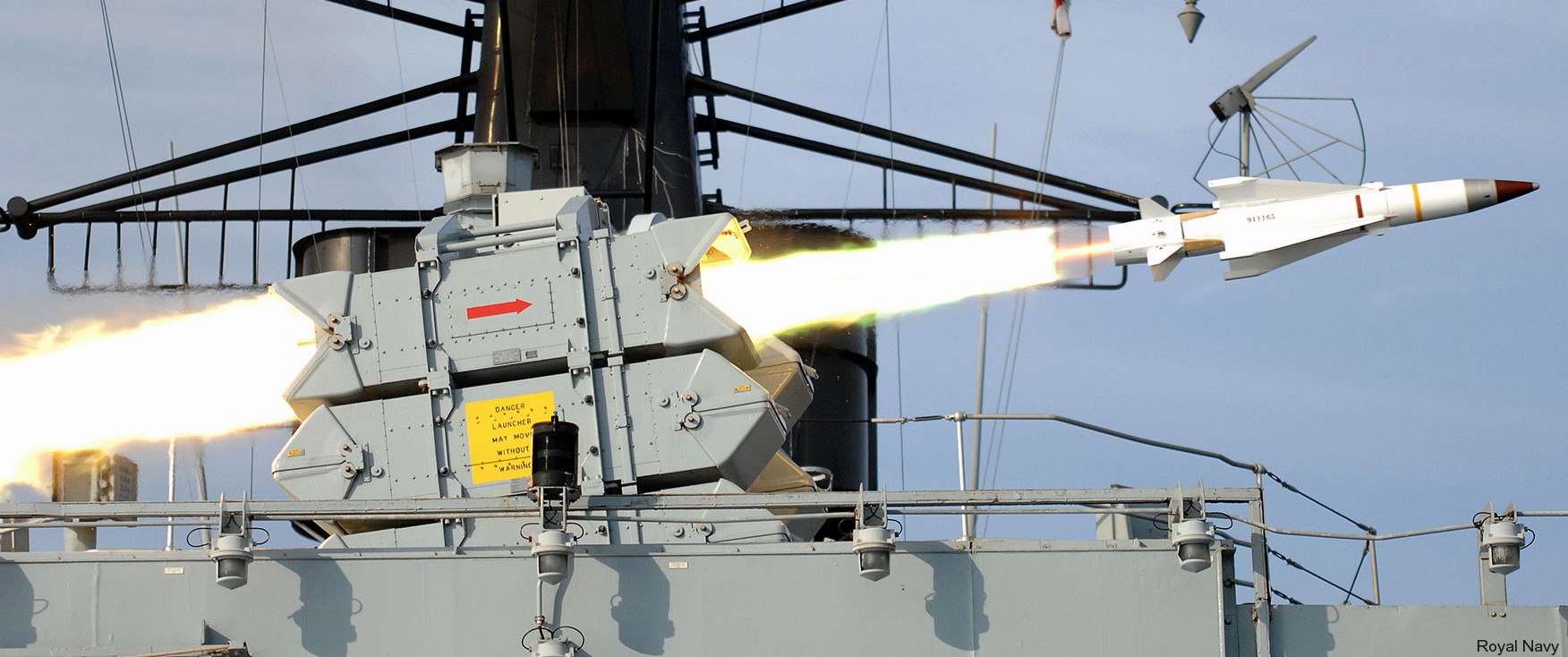 a Sea Wolf SAM wa fired from the GWS-25 (Guided Weapon System) - six-way box-launcher aboard a Type 22 class Frigate 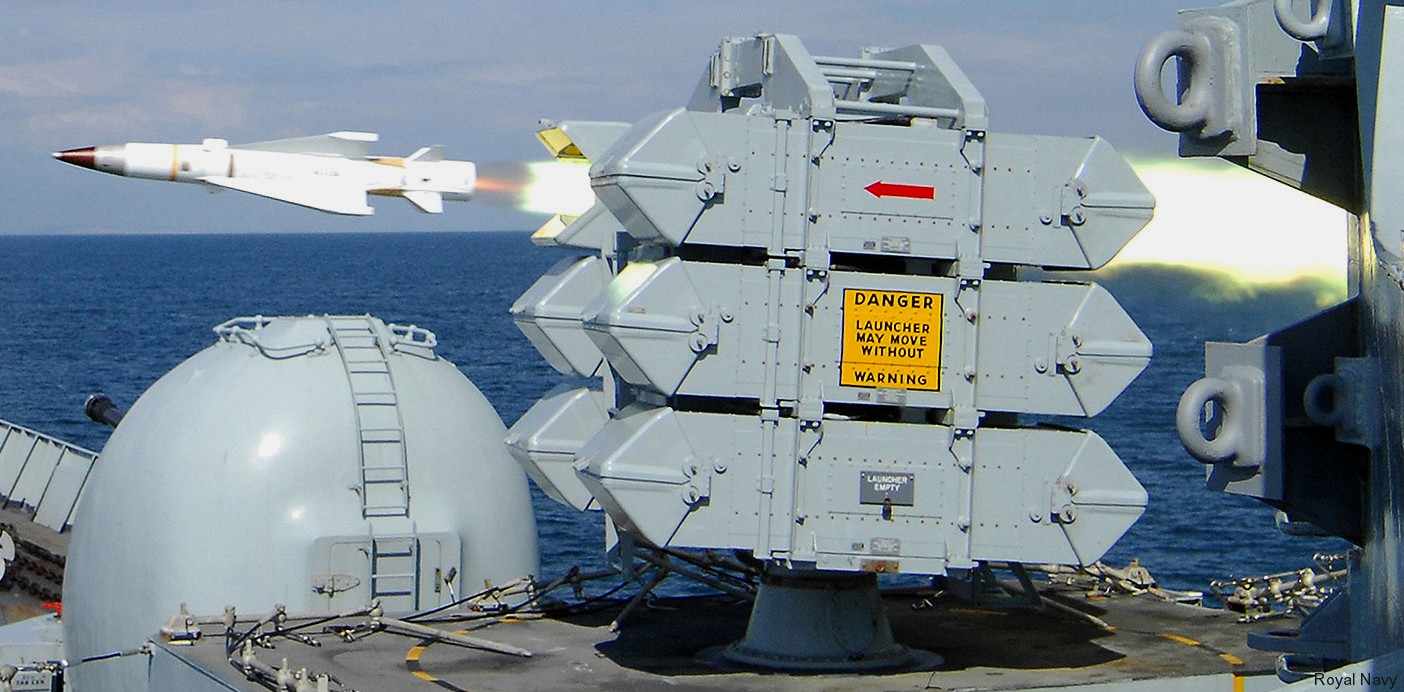 a Sea Wolf SAM wa fired from the GWS-25 (Guided Weapon System) - six-way box-launcher aboard a Type 22 class Frigate 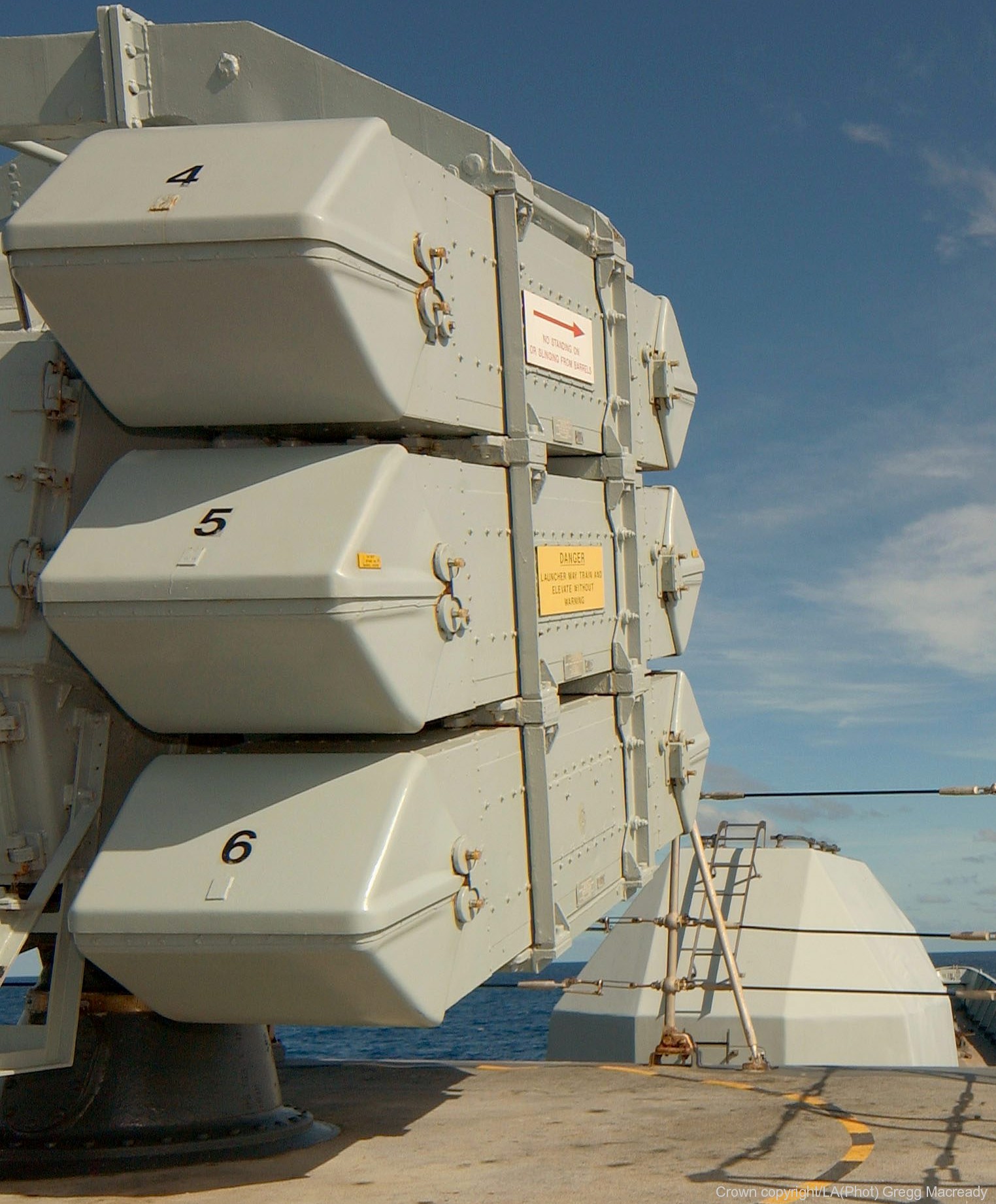 GWS-25 (Guided Weapon System) - six-way box-launcher for Sea Wolf SAM aboard a Type 22 class Frigate 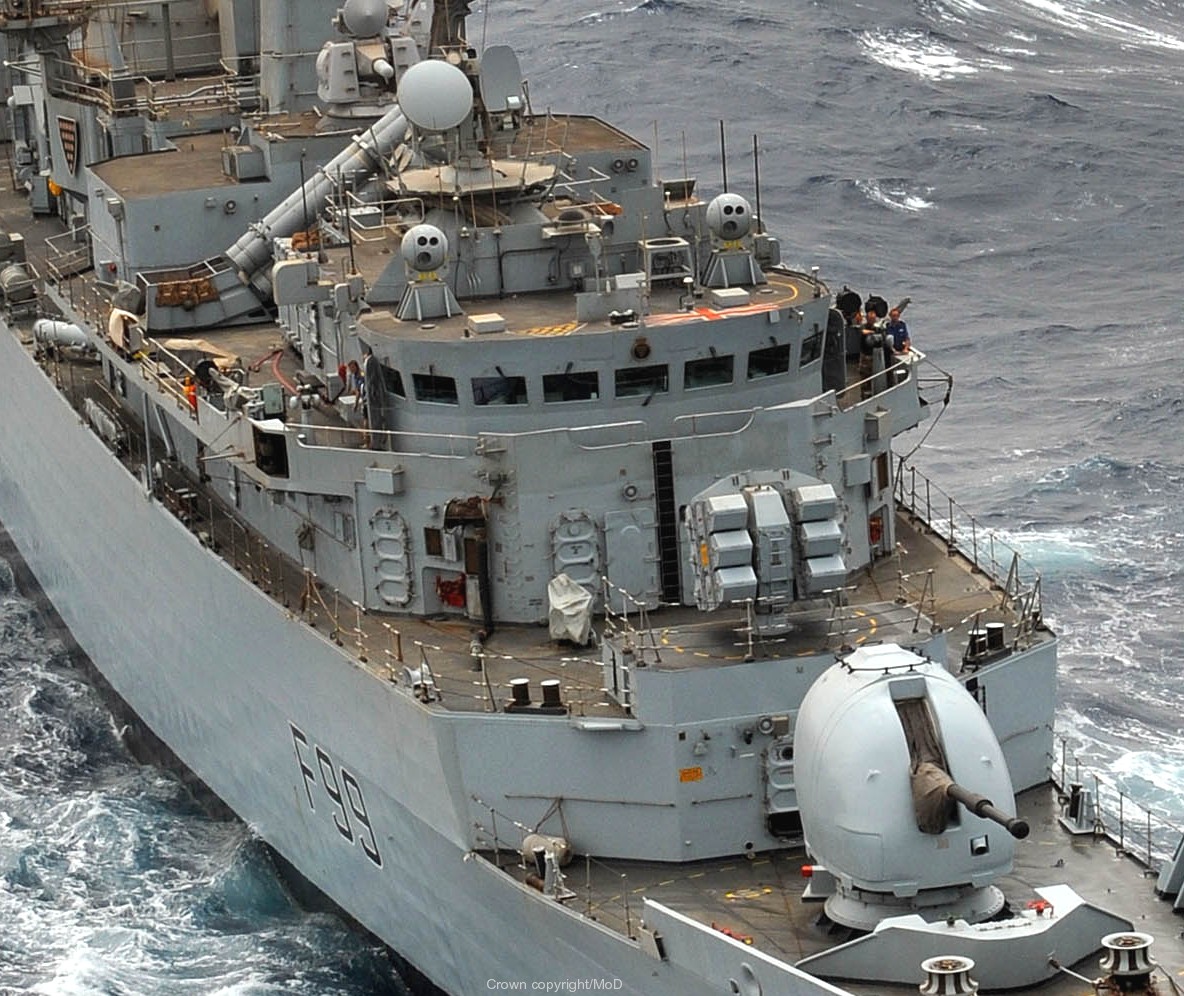 GWS-25 (Guided Weapon System) - six-way box-launcher for Sea Wolf SAM aboard a Type 22 class Frigate 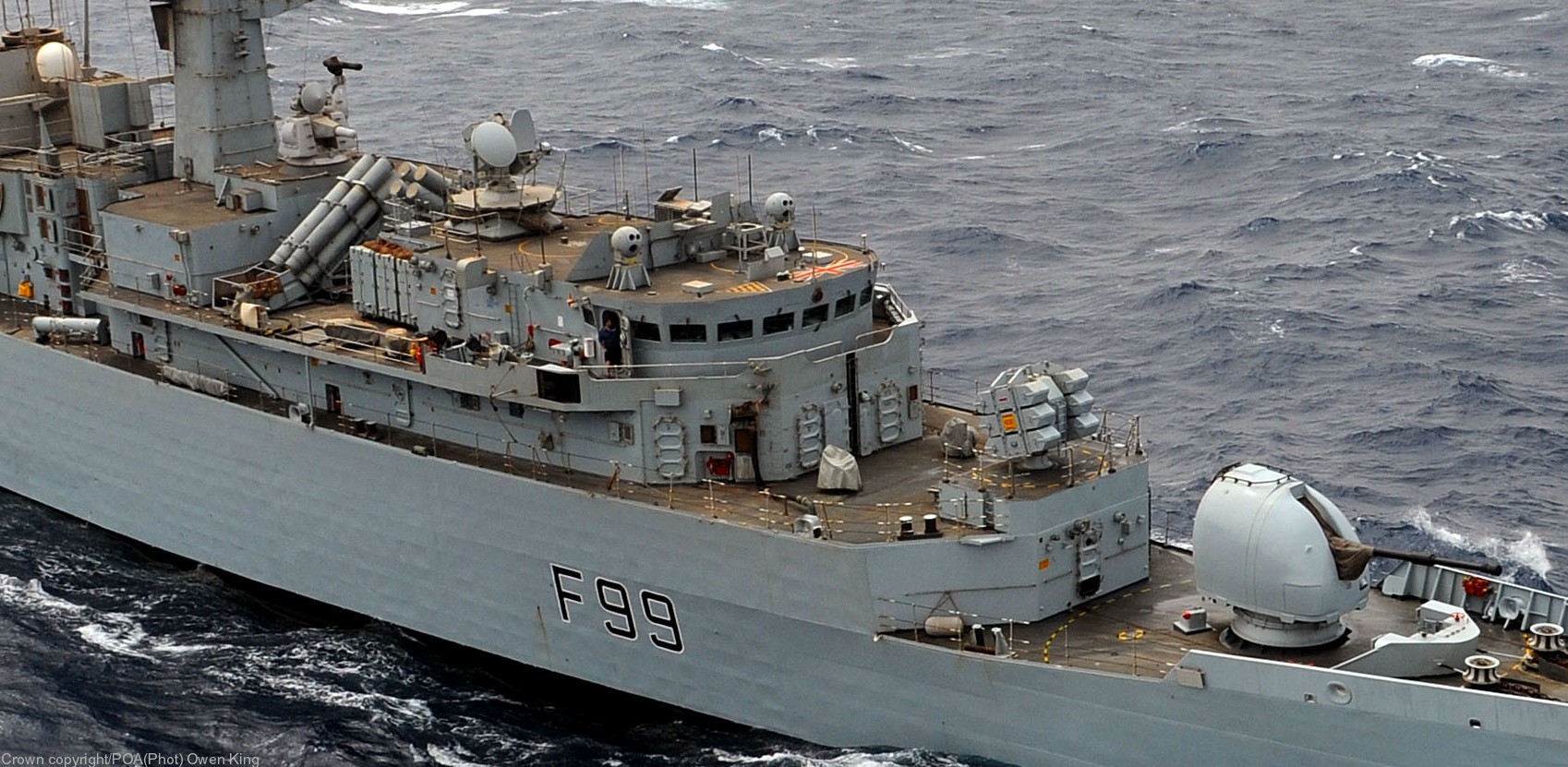 GWS-25 (Guided Weapon System) - six-way box-launcher for Sea Wolf SAM aboard a Type 22 class Frigate |
|
|
seaforces.org
|
Weapon Systems
start page
| |